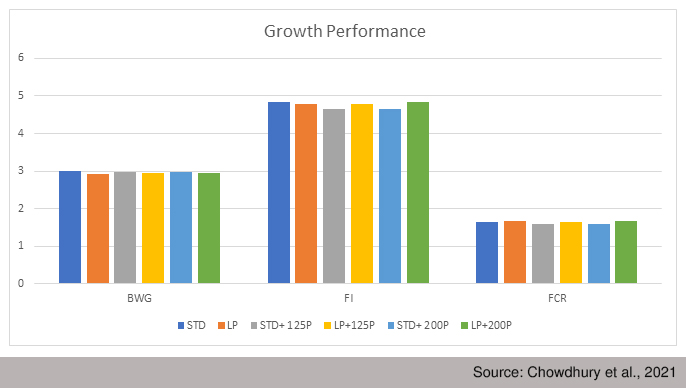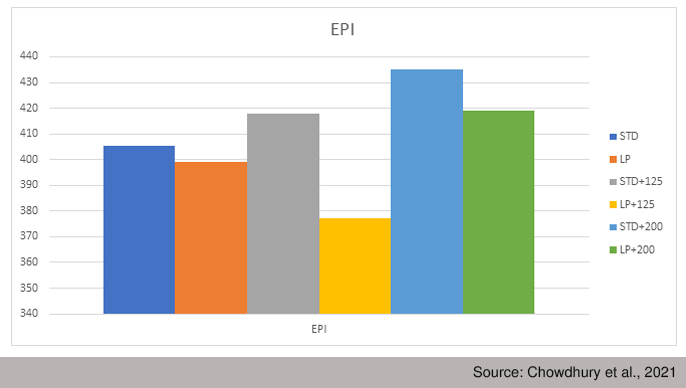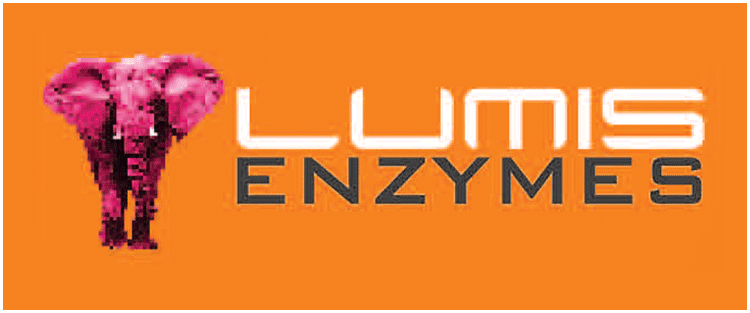
Mohammad Arifur Rahman, Regional Sales and Technical Manager, South Asia
Background
As we are in the era of AGP reduction and high growth efficiency demand, the broiler chickens are more vulnerable to impaired digestion, imbalanced gut microbiota, coccidiosis, and exposure to enteritis (NE) resulting in compromised gut health and decreased performance. Previously, endogenous enzymes were thought to be sufficient for protein digestion. However, even with the highest quality of diet, it is impossible to capture all the amino acid (AA) through endogenous enzymes in the proximal intestine. A certain amount of protein will always pass through the gastrointestinal tract without being completely digested (Wang and Parsons, 1998; Lemme et al., 2004).
The undigested proteins can potentially be used by hindgut microbes creating unwanted health and poor litter conditions. Dietary protease supplementation improves protein utilization in the gastro-intestinal tract (GIT) resulting in lower availability of nitrogenous compounds in the hindgut. It may therefore elicit a “starvation effect” on the bacteria lowering the incidence of NE and resulting in better gut health.
The purpose of this study was to identify the effect of a dietary multicomponent alkaline protease in corn-soyabean meal-based diets on hind gut microbes.
Methods
720 male broiler Cobb chickens (6 treatments 6 replicates 20 birds/replicates) were raised for 42 days with two corn-soya based diets. These are: 1. Standard diet with adequate CP/AA; 2. Low protein diet (LP), where CP/AA was decreased by 5%. These two basal diets were supplemented with graded level (0, 125, and 200 gm/t) of a multi component alkaline protease (Jefo Nutrition Inc., Canada). The birds were fed a starter (1-14 d), a grower (15-28d), and a finisher (19-42 d) diet ad libitum with unrestricted supply of drinking water.
The considered parameters for this experiment were Body weight gain (BWG), Feed intake (FI), Feed conversion Ratio (FCR) and European Productivity Index (EPI). At 42nd day, all the visible colonies were counted for the population of Escherichia coli (E. coli), Salmonella spp. and Clostridium perfringens in the ileal digesta.
Findings
In this study, we observed improved growth performance of broiler fed standard diet supplemented with increased level of protease (Table 1). Furthermore, supplementation of protease on low protein diet allowed birds to recover the losses in growth performance.
Table 1. Growth performance of broiler chicken fed standard (STD) and Low protein (LP) diets supplemented with graded level of a multi component protease.

European Productivity Index (EPI) was significantly increased by the supplementation with protease even with the bird fed with low protein diet (Table 2).
Table 2. European productivity index (EPI) of broiler chicken fed standard (STD) and Low protein (LP) diets supplemented with graded level of a multi component protease.

In ileal microbiota population, broiler fed low protein diet had lower E. coli and Clostridium perfringens level compared to STD diet. Meanwhile, protease supplementation on STD and LP diet, significantly lowers E. coli, Salmonella spp., and Clostridium perfringens population in the hind gut (Table 3).
Table 3. Ileal microbiota population in broiler chicken fed standard (STD) and Low protein (LP) diets supplemented with graded level of a multi component protease.

Conclusion
The effects of dietary protease on performance, reducing antinutritional factors and increased nutrient digestibility are well stablished. Rather, the extra proteinaceous effects of dietary protease on hind gut microbiota population are not documented yet. From this study, it can be concluded that protease supplementation sustained the growth efficiency of broiler chickens fed with low protein diet and decreased the numbers of pathogenic bacteria in the hind gut. In consequence, the study documented the extra proteinaceous effect of dietary protease on gut health along with nutrient sparing effects in broiler chickens.






















